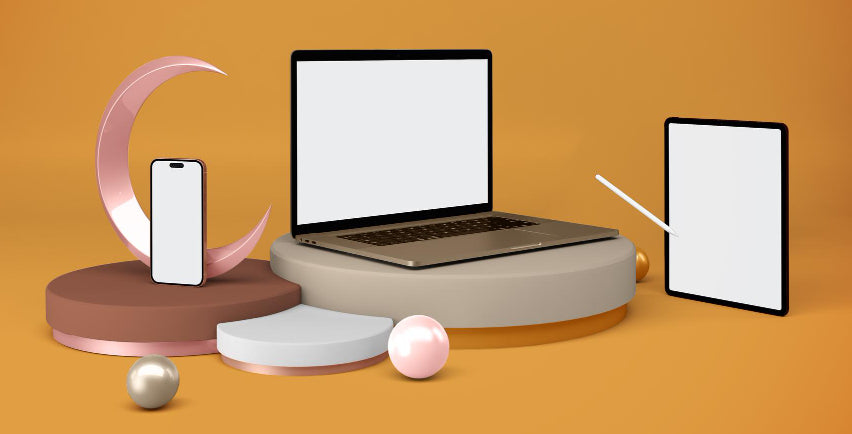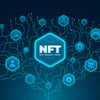How 3D Models Are Transforming the Asset Making Industry: A Comprehensive Guide

The 3D asset making industry is a diverse field that includes manufacturing and design. It plays a crucial role in creating goods to meet consumer needs. As technology advances, the industry is going through big changes that are reshaping how products are imagined, developed, and brought to market.
At the core of this transformation are 3D models. These incredible virtual representations have revolutionized how assets are designed, visualized, and made. They allow designers, engineers, and stakeholders to better understand and communicate ideas, making collaboration and decision-making much more effective during the asset creation process.
3D modeling techniques are essential tools for creating and shaping 3D models. These techniques involve various processes, like polygonal modeling, sculpting, parametric modeling, and procedural modeling. By mastering these techniques, designers can bring their creative visions to life with precision and efficiency, creating complex assets that were once difficult or impossible to achieve using traditional methods.
With the help of this guide, readers can navigate the exciting world of 3D models and discover endless creative possibilities.
I. Understanding 3D Models in the Asset Making Industry
3D models have evolved significantly over the years. Today, 3D models can capture intricate textures, lighting effects, and physical properties, closely mimicking real-world objects and environments.
3D visualization plays a crucial role in asset creation by enabling designers, engineers, and stakeholders to visualize and interact with 3D models in immersive virtual environments. This capability allows for better understanding, evaluation, and refinement of designs before physical production begins. It reduces the need for costly physical prototypes, accelerates decision-making processes, and ensures that final assets meet the desired specifications and objectives.
a. Impact of Advanced Technology on 3D Asset Making
The asset making industry has witnessed the integration of advanced technologies, such as virtual reality (VR), augmented reality (AR), and 3D printing, which have revolutionized traditional workflows. VR and AR applications enable stakeholders and customers to experience products in realistic scenarios, enhancing engagement and facilitating better design iterations. Additionally, 3D printing has enabled the production of complex, customized, and intricate assets with greater efficiency and reduced costs.
b. Industry Trends in 3D Modeling
The field of 3D modeling is continuously evolving, with several notable industry trends shaping the asset making landscape. These trends include the adoption of generative design techniques, the incorporation of artificial intelligence (AI) for automated asset creation, the integration of real-time rendering technologies for interactive visualizations, and the emergence of cloud-based collaborative platforms for seamless teamwork.

II. The Creative Workflow of 3D Design and Asset Creation
The process of 3D modeling involves several key steps, including ideation, reference gathering, blockout, detailed modeling, UV mapping, texturing, rigging, and finalizing the model. Each step requires specific techniques and software tools to ensure the creation of high-quality and accurate 3D models.
Virtual prototypes, created through 3D models, play a crucial role in streamlining asset development. They allow designers and stakeholders to validate designs, identify potential issues, and make necessary adjustments before physical production begins. By leveraging virtual prototypes, the asset development process becomes more efficient, reducing costs, and minimizing the risks associated with physical prototyping.
a. Enhancing Product Development through 3D Models
3D models enhance product development by providing a detailed and accurate representation of assets. They facilitate effective communication among team members, ensuring a shared understanding of the design vision. Furthermore, 3D models enable rapid iterations, allowing for quick modifications and optimizations based on feedback, leading to more refined and successful products.
b. Realistic Rendering and Its Visual Appeal
Realistic rendering techniques bring 3D models to life by simulating lighting conditions, materials, and textures to achieve visually stunning results. By enhancing visual appeal, realistic rendering captures the attention of customers, stakeholders, and investors, making assets more compelling and marketable.
III. The Advantages of 3D Models in the Asset Making Industry
The introduction of 3D models has sparked a revolution in the asset making industry, transforming the traditional creative process into a seamless and efficient workflow. With the power of 3D models, designers can now visualize their ideas swiftly, make real-time modifications, and iterate rapidly until they achieve the perfect design. This remarkable transformation from 2D to 3D models has revolutionized the industry, accelerating workflow and significantly reducing the time it takes to bring new products to the market. As a result, businesses equipped with 3D models gain a competitive edge, staying one step ahead of the competition.
Perhaps one of the most remarkable advantages of 3D models lies in their ability to provide customers with an immersive and interactive experience. Gone are the days of relying on static images or drawings to showcase products. Today, businesses can present 3D visualizations of their products to potential customers, opening up a whole new dimension of engagement. This interactive experience allows customers to rotate, zoom, and explore products from different angles, gaining a comprehensive understanding of the design and functionality. As a result, customers can make better-informed purchasing decisions, boosting sales and elevating overall customer satisfaction.
The game-changing impact of 3D animation has further amplified the advantages of 3D models in the digital asset realm. With 3D animation, static 3D models come to life, captivating audiences like never before. Interactive demos and product simulations, powered by 3D animation, enable businesses to showcase the practical applications of their assets in action. This dynamic approach to presenting products creates captivating marketing content that resonates deeply with audiences, leaving a lasting impression and forging stronger connections with potential customers.
The advantages of 3D models in the asset making industry are multifaceted.
i. 3D Models empower designers to unlock their creativity, making the design process more fluid and innovative.
ii. At the same time, they provide customers with a truly immersive experience, instilling confidence in their purchasing decisions.
iii. The interlink of 3D models and animation has redefined how businesses present their assets, leaving a lasting impact on customers and elevating brands to new heights.
As technology continues to advance, the future of 3D models in asset creation promises even greater possibilities, reshaping industries and opening doors to boundless creativity. The transformative power of 3D models is here to stay, and businesses that embrace this dynamic tool will undoubtedly thrive in the ever-evolving landscape of asset making.

IV. Implementing 3D Models in the Asset Making Industry
Successful implementation of 3D models in the asset making industry hinges on their seamless integration into the existing creative workflow. This transformative process involves fostering a culture of collaboration, where designers, engineers, and stakeholders come together right from the initial concept phase to the final asset development. By embracing 3D models as a fundamental tool, companies can leverage the collective expertise of their teams, leading to more efficient and innovative asset creation.
a. Overcoming Challenges in 3D Asset Creation
While 3D models offer numerous benefits that elevate the asset making process, it's essential to acknowledge that certain challenges may arise. Overcoming these hurdles necessitates a proactive approach, starting with continuous training and upskilling of design teams to adapt to new technologies and techniques. The fast-paced nature of the industry demands that designers stay updated with the latest industry trends and advancements. Staying informed allows businesses to overcome challenges related to software compatibility, file formats, and technical complexities, ensuring that the 3D modeling process remains smooth and efficient.
b. Best Practices for Utilizing 3D Models
To fully optimize the use of 3D models, companies should adopt best practices that enhance efficiency and maintain quality throughout the asset creation journey. This begins with organizing and managing 3D assets in a structured manner, facilitating easy retrieval and reuse. Adopting standardized naming conventions and implementing version control mechanisms enables teams to track revisions accurately, ensuring that the most recent and relevant version of assets is used.
Furthermore, fostering a culture of experimentation and innovation with 3D models can lead to breakthrough ideas and novel approaches to asset creation. Encouraging designers and artists to explore the full potential of 3D models nurtures creativity and pushes the boundaries of what can be achieved, resulting in truly exceptional and captivating assets.
V. The Future of 3D Models in Asset Creation
The future of 3D models in asset creation is a tantalizing prospect, brimming with the promise of cutting-edge technologies that are set to propel this dynamic field into uncharted territories. As emerging technologies such as machine learning, artificial intelligence, and real-time rendering continue to push the boundaries of innovation, the capabilities of 3D modeling are being redefined, paving the way for even more astonishingly realistic and immersive representations of assets. In this transformative journey, My3DModels stands at the forefront, embracing these groundbreaking advancements to ensure their clients reap the benefits of the latest innovations and maintain their competitive edge in their respective industries.
a. Predictions for the Advancement of 3D Modeling
The trajectory of 3D modeling techniques promises to chart an awe-inspiring course as it converges digital and physical realities seamlessly. The evolution of modeling tools is set to make the creation process even more accessible and intuitive, democratizing the power of 3D modeling for a broader range of users. Enhanced automation of certain processes will streamline workflows, fostering greater efficiency and saving valuable time. As the lines between imagination and reality blur, the possibilities for creative expression will become limitless, empowering artists and designers to breathe life into their visions with unparalleled precision and ease.
Beyond the realm of pure creativity, the potential integration of blockchain technology casts a captivating vision for the future of asset creation. By leveraging blockchain, secure asset ownership can be guaranteed, providing an unprecedented level of authenticity and traceability. This revolutionary concept opens the door to novel possibilities for asset distribution and licensing, allowing creators and businesses to explore new avenues for revenue generation and collaboration.
b. Potential Applications in Other Industries
While 3D modeling has already made remarkable strides in industries like gaming, architecture, and product design, its potential for transformative impact extends far beyond these horizons. The applications of 3D models in other sectors are boundless and bound to revolutionize the way information is conveyed and experiences are delivered.
In the realm of education, 3D models hold the potential to make learning more immersive and engaging, enabling students to interact with complex concepts in a tangible way. In healthcare, the power of 3D models can aid medical professionals in visualizing and understanding anatomical structures, facilitating better diagnosis and treatment planning. Marketing and entertainment industries can leverage 3D models to create captivating visual content that captivates audiences and leaves a lasting impression.
My3DModels explore these exciting opportunities, driven by a passionate quest to expand its horizons and make a positive impact across diverse domains. By pushing the boundaries and embracing new challenges, My3DModels seeks to shape the future, where 3D models become integral to transforming industries, enhancing experiences, and unlocking the full potential of human creativity.
In this promising future, 3D models transcend their traditional roles to become catalysts for progress, unifying creativity and technology to forge a path towards boundless innovation. My3DModels, with its forward-thinking approach, spearheads this transformative journey, inviting clients and industries alike to embrace the realm of possibilities that 3D models unfurl before them. As the world evolves, so do the boundless possibilities of 3D models, offering a glimpse of the astounding heights yet to be reached in the exhilarating realm of asset creation.

VI. Conclusion
In conclusion, the transformative power of 3D models in the asset making industry is undeniable, and My3DModels stands at the forefront of this revolution. With its customized approach, collaborative ethos, and commitment to excellence, My3DModels has redefined what it means to create stunning, functional, and immersive 3D assets. As we look to the future, the possibilities are limitless, and My3DModels remains dedicated to pushing the boundaries of innovation, enhancing industries, and empowering clients to realize their visions with unmatched creativity and precision.
The journey of 3D models in the asset making industry has only just begun, and My3DModels invites businesses to embark on this transformative expedition to embrace the power of 3D and unlock new dimensions of success. Staying updated with industry trends and investing in 3D modeling will undoubtedly be the key to thriving in the ever-evolving landscape of asset creation. Together, let's shape a future where creativity knows no bounds, and every idea can be brought to life in stunning 3D reality.




